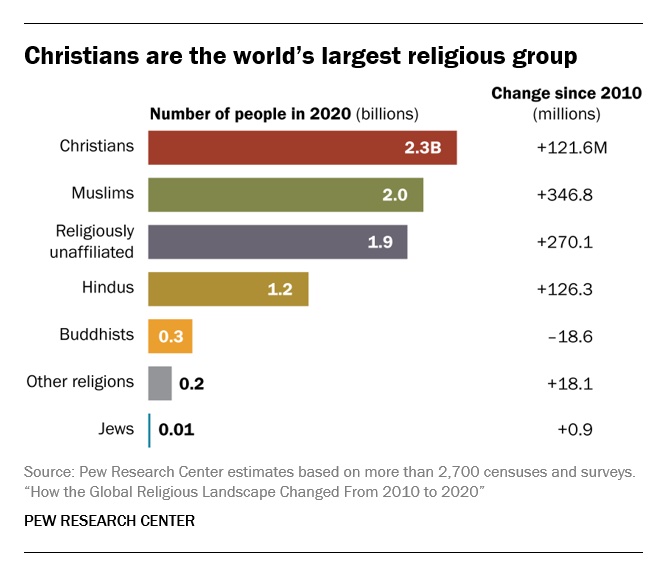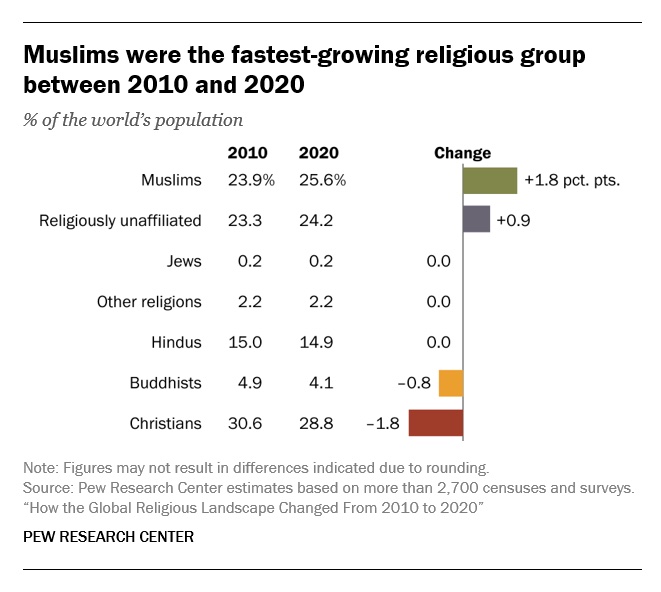Uncategorized
A Golda Meir biopic starring Helen Mirren avoids politics. It premiered as Israel’s government faces widespread scrutiny.
(JTA) — When a film about a group of Israeli youths who visit former concentration camps in Poland premiered on Sunday at the Berlin Film Festival, its Israeli producer took the microphone after the screening to decry the state of his nation.
“The new far-right government that is in power is pushing fascist and racist laws,” said Yoav Roeh, a producer of “Ha’Mishlahat” (“Delegation”) on stage after the film’s premiere. He was referring to lawmakers in Israel’s government who have long histories of anti-Arab rhetoric and their new proposals to limit the power of the country’s Supreme Court, which critics at home and around the world deem a blow to Israel’s status as a democracy.
“Israel is committing suicide after 75 years of existence,” Roeh added.
The next day brought the premiere of “Golda,” a highly-anticipated Golda Meir biopic starring Oscar winner Helen Mirren about the former Israeli prime minister and her decisions during the 1973 Yom Kippur War. Hours earlier, Israel’s government took another step closer to passing its controversial judicial reforms, and when asked about the political situation, Mirren didn’t mince words.
“I think [Meir] would have been utterly horrified,” she told AFP. “It’s the rise of dictatorship and dictatorship was what has always been the enemy of people all over the world and she would recognize it as that.”
That was the heated backdrop for the debut of “Golda,” which will not hit U.S. theaters until August. But an onlooker wouldn’t know that from the film’s own introductory press conference with Mirren, director Guy Nattiv and other stars from the film. The headlines that have emerged from it have been dominated by the film’s place in the “Jewface” debate, about who should play Jewish characters on screen. Mirren is not Israeli or Jewish.
“Let’s say that we’re making a movie about Jesus Christ. Who’s going to play him?” Mirren’s co-star Lior Ashkenazi stepped in to answer in response to a journalist, eliciting laughter from the press corps.
The film is framed by Meir’s testimony to the Agranat Commission, which investigated the lead-up to the war. As the film shows through flashbacks, Meir appears to have not acted quickly enough on Mossad intelligence about a possible attack from Egyptian and Syrian forces. Israeli forces were surprised on the holiday and initially lost ground; both sides lost thousands of troops, and the war is seen as a major trauma in Israeli history — the moment when the state’s conception of its military superiority over its Arab neighbors was shattered. The film is claustrophobic, shot mostly indoors — in bunkers, hospital rooms and government offices — and offers an apt visual encapsulation of the loss the war would bring.
Mirren walks the red carpet at the Berlin Film Festival, Feb. 20, 2023. She spent time on a kibbutz in 1967. (Courtesy of Berlinale)
Though Meir has historically been lionized as a tough female hero in the United States and in Jewish communities around the world (even non-Jewish soldiers in Ukraine took inspiration from her in the early days of the Russian invasion last year), her legacy is more complicated in Israel and the Palestinian territories. In addition to being associated with the trauma of the war for many Jewish Israelis, she is remembered as an inveterate enemy by Palestinians.
In recent years, the representation of Meir has shifted more favorably in Israel, said Meron Medzini, Meir’s former press secretary and one of her biographers. He said that historians have begun to view her favorably in comparison to some of the political leaders who followed her.
“I consider the film [‘Golda’] part of this effort to rehabilitate her name,” he told the Jewish Telegraphic Agency. “I think she is now gaining her rightful place in the history.”
“Golda” fits into Medzini’s narrative by emphasizing the intractability and pride of her Cabinet ministers as the prime reasons for Israel’s surprise. It affirms Meir’s honor by portraying her as attempting to protect the ministers from criticism — all men — and to promote national unity.
At the press conference, Nattiv gave the briefest of nods to Meir’s complex legacy but like Medzini compared her to Israel’s current slate of leaders, who he reserved brief criticism for.
“Golda is not a super clean character in this movie,” said Nattiv, who is best known for directing “Skin,” a 2018 film about a neo-Nazi. “She had her faults. She made mistakes. And she took responsibility, which leaders are not doing today.”
Meir has long enjoyed a kind of star status in the United States. She was interviewed by Barbra Streisand in 1978, close to the Israeli leader’s death from cancer, for a TV special on Israel’s 30th anniversary.
“She clearly is the great-grandmother of the Jewish people [in the special] and Streisand is very reverential toward her,” Tony Shaw, a history professor at the University of Hertfordshire and the author of “Hollywood and Israel: A History,” said about the Streisand interview. “She just comes across as very humble, slightly out-of-date, out-of-time.”
“Of course, it’s very different from what we now know Golda Meir was really like,” he added, referring to her strong character and political pragmatism, which the film seeks to convey.
Since William Gibson’s critically-panned 1977 play also titled “Golda,” there have been a number of representations of Meir. Most famous among them is Ingrid Bergman’s final performance in “Golda Meir,” a four-hour-long television biopic from 1982. That production “was very much in keeping with Hollywood’s treatment of Israel in that period,” said Shaw, “which was very sympathetic towards Golda Meir, towards Israel and the troubles it was having in the first 30 years of its life.” More recently, Meir appears in Steven Spielberg’s more ambivalent 2005 film “Munich,” in which she helps to recruit the film’s protagonist to track down the figures behind the 1972 Munich Olympics attacks.
Golda Meir meets with Israeli Defense Minister Moshe Dayan and troops on the Golan Heights during the Yom Kippur War, Oct. 21, 1973. (Ron Frenkel/GPO/Getty Images)
Nattiv’s work, which has received mixed early reviews, focuses on the war as reflected in Meir’s character, forgoing engagement with broader politics or history.
“My inspiration was ‘Das Boot,’ in the way that she is in the trenches,” said Nattiv, referencing the revered World War II movie from 1981 set in a German U-boat. “She is very alone in the mayhem of war around these men.”
“This is the Vietnam of Israel,” he explained. “It is a very tough and hard look at the war and every soldier that died…Golda takes it to her heart.”
Despite the “Jewface” questioning, Nattiv compared Mirren to an “aunt” figure who, for him, had the “Jewish chops to portray Golda.” Mirren explained to the AFP that she has long felt a connection to Israel and to Meir, especially after a stay on a kibbutz in 1967, not long after the Six-Day War, with a Jewish boyfriend.
“She was at her happiest on the kibbutz actually,” Mirren said. “Their idealism, their dream of the perfect world. And I did experience that which was great.”
Sanders Isaac Bernstein contributed reporting from Berlin.
—
The post A Golda Meir biopic starring Helen Mirren avoids politics. It premiered as Israel’s government faces widespread scrutiny. appeared first on Jewish Telegraphic Agency.
Uncategorized
How the Global Religious Landscape Changed from 2010 to 2020

Muslims grew fastest; Christians lagged behind global population increase
• Christians are the world’s largest religious group, at 28.8% of the global population. They are a majority everywhere except the Asia-Pacific and Middle East-North Africa regions. Sub-Saharan Africa has surpassed Europe in having the largest number of Christians. But Christians are shrinking as a share of the global population, as millions of Christians “switch” out of religion to become religiously unaffiliated.

• Muslims are the world’s second-largest religious group (25.6% of the world’s population) and the fastest-growing major religion, largely due to Muslims’ relatively young age structure and high fertility rate. They make up the vast majority of the population in the Middle East-North Africa region. In all other regions, Muslims are a religious minority, including in the Asia-Pacific region (which is home to the greatest number of Muslims).

• The religiously unaffiliated population is the world’s third-largest religious category (24.2% of the global population), after Christians and Muslims. Between 2010 and 2020, religiously unaffiliated people grew more than any group except Muslims, despite their demographic disadvantages of an older age structure and relatively low fertility. The unaffiliated made up a majority of the population in 10 countries and territories in 2020, up from seven a decade earlier.
• Hindus are the fourth-largest religious category (14.9% of the world’s population), after Christians, Muslims and religiously unaffiliated people. Most (99%) live in the Asia-Pacific region; 95% of all Hindus live in India alone. Between 2010 and 2020, Hindus remained a stable share of the world’s population because their fertility resembles the global average, and surveys indicate that switching out of or into Hinduism is rare.
• Buddhists (4.1% of the world’s population) are the only group in this report whose number declined worldwide between 2010 and 2020. This was due both to religious disaffiliation among Buddhists in East Asia and to a relatively low birth rate among Buddhists, who tend to live in countries with older populations. Most of the world’s Buddhists (98%) reside in the Asia-Pacific region, the birthplace of Buddhism.
• Jews, the smallest religious group analyzed separately in this report (0.2% of the world’s population), lagged behind global population growth between 2010 and 2020 – despite having fertility rates on par with the global average – due to their older age structure. Most Jews live either in North America (primarily in the United States) or in the Middle East-North Africa region (almost exclusively in Israel).
These are among the key findings of a Pew Research Center analysis of more than 2,700 censuses and surveys, including census data releases that were delayed due to the coronavirus pandemic. This report is part of the Pew-Templeton Global Religious Futures project, which analyzes global religious change and its impact on societies around the world. Funding for the Global Religious Futures project comes from The Pew Charitable Trusts and the John Templeton Foundation.
Uncategorized
Antisemitism in some unlikely places in America

By HENRY SREBRNIK Antisemitism flourishes in a place where few might expect to confront it – medical schools and among doctors. It affects Jews, I think, more emotionally than Judeophobia in other fields.
Medicine has long been a Jewish profession with a history going back centuries. We all know the jokes about “my son – now also my daughter – the doctor.” Physicians take the Hippocratic Oath to heal the sick, regardless of their ethnicity or religion. When we are ill doctors often become the people who save us from debilitating illness and even death. So this is all the more shocking.
Yes, in earlier periods there were medical schools with quotas and hospitals who refused or limited the number of Jews they allowed to be affiliated with them. It’s why we built Jewish hospitals and practices. And of course, we all shudder at the history of Nazi doctors and euthanasia in Germany and in the concentration camps of Europe. But all this – so we thought – was a thing of a dark past. Yet now it has made a comeback, along with many other horrors we assume might never reappear.
Since the Hamas attack on Israel on October 7, 2023, there has been a resurgence of antisemitism, also noticeable in the world of healthcare. This is not just a Canadian issue. Two articles on the Jewish website Tablet, published Nov. 21, 2023, and May 18, 2025, spoke to this problem in American medicine as well, referencing a study by Ian Kingsbury and Jay P. Greene of Do No Harm, a health care advocacy group, based on data amassed by the organization Stop Antisemitism. They identified a wave of open Jew-hatred by medical professionals, medical schools, and professional associations, often driven by foreign-trained doctors importing the Jew-hatred of their native countries, suggesting “that a field entrusted with healing is becoming a licensed purveyor of hatred.”
Activists from Doctors Against Genocide, American Palestinian Women’s Association, and CODEPINK held a demonstration calling for an immediate cease-fire in Gaza at the Hart Senate Office Building in Washington, D.C., Nov. 16, 2023, almost as soon as the war began. A doctor in Tampa took to social media to post a Palestinian flag with the caption “about time!!!” The medical director of a cancer centre in Dearborn, Michigan, posted on social media: “What a beautiful morning. What a beautiful day.” Even in New York, a physician commented on Instagram that “Zionist settlers” got “a taste of their own medicine.” A Boston-based dentist was filmed ripping down posters of Israeli victims and a professor at the University of Pennsylvania Perelman School of Medicine did the same. Almost three-quarters of American medical associations felt the need to speak out on the war in Ukraine but almost three-quarters had nothing to say about the war in Israel.
Antisemitism in academic medical centres is fostering noxious environments which deprive Jewish healthcare professionals of their civil right to work in spaces free from discrimination and hate, according to a study by the Data & Analytics Department of StandWithUs, an international, non-partisan education organization that supports Israel and fights antisemitism.
“Academia today is increasingly cultivating an environment which is hostile to Jews, as well as members of other religious and ethnic groups,” StandWithUs director of data and analytics, and study co-author, Alexandra Fishman, said on May 5 in a press release. “Academic institutions should be upholding the integrity of scholarship, prioritizing civil discourse, rather than allowing bias or personal agendas to guide academic culture.”
The study, “Antisemitism in American Healthcare: The Role of Workplace Environment,” included survey data showing that 62.8 per cent of Jewish healthcare professionals employed by campus-based medical centres reported experiencing antisemitism, a far higher rate than those working in private practice and community hospitals. Fueling the rise in hate, it added, were repeated failures of DEI (diversity, equity, and inclusion) initiatives to educate workers about antisemitism, increasing, the report said, the likelihood of antisemitic activity.
“When administrators and colleagues understand what antisemitism looks like, it clearly correlates with less antisemitism in the workplace,” co-author and Yeshiva University professor Dr. Charles Auerbach reported. “Recognition is a powerful tool — institutions that foster awareness create safer, more inclusive environments for everyone.”
Last December, the Data & Analytics Department also published a study which found that nearly 40 per cent of Jewish American health-care professionals have encountered antisemitism in the workplace, either as witnesses or victims. The study included a survey of 645 Jewish health workers, a substantial number of whom said they were subject to “social and professional isolation.” The problem left more than one quarter of the survey cohort, 26.4 per cent, “feeling unsafe or threatened.”
The official journal of the Alliance for Academic Internal Medicine concurs. According to “The Moral Imperative of Countering Antisemitism in US Medicine – A Way Forward,” by Hedy S. Wald and Steven Roth, published in the October 2024 issue of the American Journal of Medicine, increased antisemitism in the United States has created a hostile learning and practice environment in medical settings. This includes instances of antisemitic behaviour and the use of antisemitic symbols at medical school commencements.
Examples of its impact upon medicine include medical students’ social media postings claiming that Jews wield disproportionate power, antisemitic slogans at the University of California, Los Angeles (UCLA) David Geffen School of Medicine, antisemitic graffiti at the University of California, San Francisco (UCSF) Cancer Centre, Jewish medical students’ exposure to demonization of Israel diatribes and rationalizing terrorism; and faculty, including a professor of medicine at UCSF, posting antisemitic tropes and derogatory comments about Jewish health care professionals. Jewish medical students’ fears of retribution, should they speak out, have been reported. “Our recent unpublished survey of Jewish physicians and trainees demonstrated a twofold increase from 40% to 88% for those who experienced antisemitism prior to vs after October 7,” they stated.
In some schools, Jewish faculty are speaking out. In February, the Jewish Faculty Resilience Group at UCLA accused the institution in an open letter of “ignoring” antisemitism at the School of Medicine, charging that its indifference to the matter “continues to encourage more antisemitism.” It added that discrimination at the medical school has caused demonstrable harm to Jewish students and faculty. Student clubs, it said, are denied recognition for arbitrary reasons; Jewish faculty whose ethnic backgrounds were previously unknown are purged from the payrolls upon being identified as Jews; and anyone who refuses to participate in anti-Zionist events is “intimidated” and pressured.
Given these findings, many American physicians are worried not only as Jewish doctors and professionals, but for Jewish patients who are more than ever concerned with whom they’re meeting. Can we really conceive of a future where you’re not sure if “the doctor will hate you now?”
Henry Srebrnik is a professor of political science at the University of Prince Edward Island.
Uncategorized
The 2025 Toronto Walk (and talk ) for Israel

By GERRY POSNER There are walks and then there are walks. The Toronto UJA Walk for Israel on May 25, 2025 was one of a kind, at least as far as Canada and Jews are concerned. The number of people present was estimated to be 56,000 people or 112,000 total shoes. (How they get to that number is bewildering to me, since there is no one counting). This was 6,000 more than last year. Whether it is true or not, take it from me, it was packed. The synagogues in Canada should be so fortunate to get those numbers in total on High Holidays. The picture here gives you a sense of the size of the crowd.

This was my first walk in Toronto for Israel and I was with my granddaughter, Samantha Pyzer (not to forget her two friends whom she managed to meet at the site, no small feat, even with iPhones as aids). The official proceedings began at 9:00 a.m. and the walk at 10:00 a.m. There was entertainment to begin with, also along the way, and at the finish as well. The finish line this year was the Prosserman Centre or the JCC as it often called. The walk itself was perhaps 4 kilometres – not very long, but the walking was slow, especially at the beginning. There were lots of strollers, even baby carriages, though I did not see any wheelchairs. All ages participated on this walk. I figured, based on what I could see on the faces of people all around me that, although I was not the oldest one on the walk, I bet I made the top 100 – more likely the top 20.
What was a highlight for me was the number of Winnipeggers I met, both past and present. Connecting with them seemed to be much like a fluke. No doubt, I missed la lot of them, but I saw, in no particular order (I could not recall the order if my life depended on it): Alta Sigesmund, (who was, a long time ago, my daughter Amira’s teacher), Marni Samphir, Karla Berbrayer and her husband Dr. Allan Kraut and family. Then, when Samantha and I made it to the end and sat down to eat, I struck up a conversation with a woman unknown to me and as we chatted, she confirmed her former Winnipeg status as a sister-in- law to David Devere, as in Betty Shwemer, the sister of Cecile Devere. I also chanced upon Terri Cherniack, only because I paused for a moment and she spotted me. As we closed in near the finish, I met ( hey were on their way back), Earl and Suzanne Golden and son Matthew, as well as Daniel Glazerman. That stop caused me to lose my granddaughter and her pals. Try finding them amid the noise and size of the crowd – but I pulled it off.

As I was in line to get food, I started chatting with a guy in the vicinity of my age. I dropped the Winnipeg link and the floodgates opened with “ Did I know Jack and Joanie Rusen?” So that was an interesting few minutes. And I was not too terribly surprised to come across some of my Pickleball family. All of these meetings, along with spotting some of my sister’s family and other cousins, were carried on with the sound of the shofar as we moved along the way. In short, this was a happening. Merchants selling a variety of products, many of them Israeli based, were in evidence and, of course, the day could not have ended without the laying of tefillin, aided by Chabad, who have perfected the procedure to take less than a minute. See the photo. Chabad had a willing audience.
Aside from the joy of sharing this experience with my granddaughter, the very presence of all these Jews gathered together for a common reason made this day very special to me. However, there was a downside to the day. The downside was that, as we began to walk back to our car there was no other way I could figure out how to return when the rains came and came. While we walked faster, we were impeded by pouring rain and puddles. But Samantha wanted to persevere, as did I. We made it, but were drenched. My runners are still drying out as I write this two days later.
What with being surrounded by 56,000 people, the noise, the slow walking, and the rain, I can still say the day was a real highlight for me – one of the better moments since our arrival in Toronto in 2012. As well as the photos we took along the way, I have the reminder of the day, courtesy of the UJA, as evidenced from the photo. It was not just the walk, but the talk that accompanied the walk that made it so worthwhile for me. I would do it again, minus the rain.
